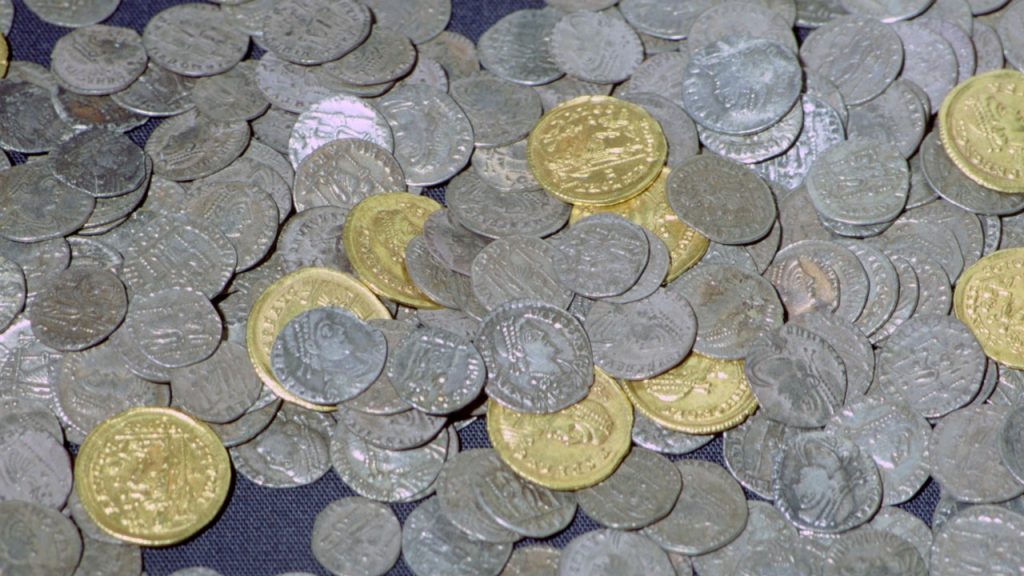The Hoxne Hoard, discovered in 1992 in Suffolk, is considered the largest hoard of Roman treasure ever found in Britain. The collection includes gold and silver coins, as well as tableware and jewelry. The hoard was found accidentally by farmer Eric Lawes while he was searching for a lost hammer with a metal detector. This unique discovery led to the recovery of over 60 pounds of gold and silver artifacts, including around 15,000 Roman coins, as well as pieces of jewelry like necklaces, rings, and bracelets.
After Lawes reported his find, the Suffolk County Council Archaeology Service quickly arrived on the scene to begin excavating the treasures. The discovery of the Hoxne Hoard, which includes the well-known “Empress” pepper pot and a set of spoons decorated with marine themes, shed light on the burial of these items in the 5th century A.D. Archaeologists believe that the hoard was buried for protection during a time of uncertainty in the western Roman Empire, when soldiers were leaving Britain. The hoard was never retrieved by its owners, leading to its preservation for centuries until its discovery.
One of the unique aspects of the Hoxne Hoard is how it was found by accident, while the farmer was simply looking for a lost hammer. The hoard is now on display at the British Museum in London, where visitors can see many of the coins, jewelry, and tableware that were unearthed. The discovery of the hoard led to a financial reward for Lawes, as well as increased interest in the history and archaeology of the region. The hoard’s significance lies not only in its monetary value but also in its historical and cultural importance as a window into Roman Britain.
In addition to the Hoxne Hoard, other significant archaeological finds, such as the Staffordshire Hoard in Staffordshire, have shed light on the ancient history of Britain. The Staffordshire Hoard, with over 4,000 items, is the largest collection of its kind ever discovered. In contrast to the accidental discovery of the Hoxne Hoard, the Staffordshire Hoard was found buried near a burial ground. These hoards provide valuable insights into the lives and customs of ancient civilizations, as well as the economic and social conditions of the time.
The discovery and excavation of these hoards offer glimpses into the past, allowing researchers and historians to piece together the puzzle of ancient societies. The artifacts found in hoards like the Hoxne Hoard and the Staffordshire Hoard provide clues about the trade, craftsmanship, and cultural practices of their respective time periods. The meticulous preservation and display of these treasures at museums like the British Museum ensure that their stories are shared with future generations, adding to our understanding of history and the people who lived in Britain centuries ago.


